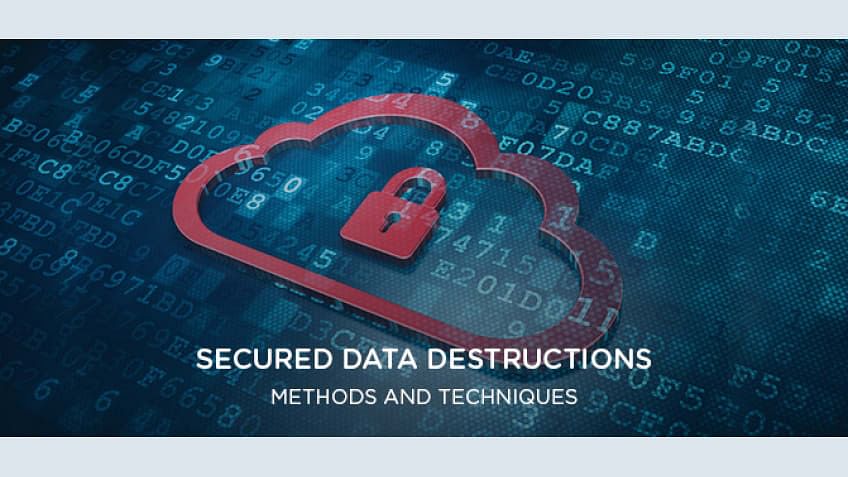Why Data Destruction is a Crucial Component of Comprehensive Cyber Security
Why Data Destruction is a Crucial Component of Comprehensive Cyber Security
Blog Article
Discovering the Value of Information Destruction in the Context of Computer Safety And Security Providers and Protecting Confidential Data
In an age where information violations are significantly typical, the value of effective information damage can not be overstated. What approaches can companies carry out to boost their data devastation protocols?
Recognizing Data Damage
Information damage is an important component of computer system security that includes the long-term removal of information from storage space gadgets to avoid unapproved accessibility and potential information breaches. In an increasingly electronic landscape, companies face enhanced risks connected with delicate details being improperly accessed or manipulated. Efficient data damage safeguards versus these threats, guaranteeing that confidential dataâEUR" such as consumer info, copyright, and financial recordsâEUR" can not be recovered after disposal.
Understanding the relevance of information devastation expands beyond plain compliance with legal and regulatory frameworks; it is vital for keeping business integrity and trust. When information is incorrectly handled or improperly destroyed, the consequences can be extreme, consisting of monetary loss, reputational damage, and legal obligations.

Methods of Information Eradication

One widespread method is information cleaning, which entails overwriting existing information with random patterns several times. This method makes the initial information irretrievable, making it a prominent option for companies looking for to secure secret information.
One more approach is degaussing, which utilizes an effective electromagnetic field to disrupt the magnetic domains on storage devices, effectively eliminating the information. This strategy is specifically effective for magnetic media however is not applicable to solid-state drives.
Physical damage is one more durable method, involving the shredding or squashing of storage devices. This technique assurances that data recovery is practically impossible, making it ideal for very delicate details.
Finally, security can offer as a corresponding technique to data removal. By encrypting data prior to removal, companies can add an additional layer of safety and security, guaranteeing that also if residues are recuperated, they remain unattainable without the decryption trick. Each method needs to be chosen based on the degree of information sensitivity and the specific protection demands of the organization.
Legal Conformity and Information Safety And Security
Organizations should browse a complicated landscape of legal requirements connected to data safety and security, particularly after executing methods of information eradication. Different policies, such as the General Data Protection Policy (GDPR) and the Medical Insurance Transportability and Accountability Act (HIPAA), impose strict standards on just how organizations have to handle and dispose of sensitive information. Failure to follow these policies can cause substantial legal repercussions, consisting of substantial penalties and reputational damage.
Data destruction procedures should be carefully documented to demonstrate conformity with suitable regulations and criteria. This documentation not only acts as proof of adherence to lawful responsibilities but additionally illustrates a commitment to securing sensitive information. Organizations ought to likewise develop clear policies concerning data retention and devastation timelines, guaranteeing that data is not held longer than necessary.

Additionally, routine audits and analyses of data destruction practices are important to keep conformity and adjust to progressing lawful frameworks (data destruction). By proactively addressing legal needs, organizations can reduce threats associated with data breaches and show their commitment to data protection. Inevitably, prioritizing lawful compliance in data destruction procedures is not just a governing responsibility, however a basic element of a robust information protection method
Influence On Company Track Record
The reputation of a service can be considerably impacted by its approach to information devastation and monitoring. In today's electronic landscape, where information breaches can occur at any type of moment, the failure to properly throw away sensitive details investigate this site can lead to serious effects. Organizations that inadequately manage information devastation risk revealing personal client information, which not only breaks privacy legislations however also wears down trust among stakeholders and clients.
A tarnished reputation can result in lowered customer commitment, as customers become hesitant to involve with a business that has actually shown oversight in safeguarding their information. Additionally, unfavorable publicity surrounding a data violation can have a long-term result, as potential clients could be hindered by the perceived absence of safety. This can bring about a straight decrease in revenue and market share.
Additionally, companies that focus on data damage as component of their security method can improve their get redirected here online reputation by showcasing their dedication to securing sensitive information. By adopting stringent data management practices, companies can not only alleviate risks yet also position themselves as trustworthy entities in their corresponding markets, thereby enhancing their overall brand name photo.

Ideal Practices for Secure Disposal
Executing finest techniques for safe disposal of data is necessary for alleviating threats connected with data breaches and making certain compliance with privacy guidelines. Organizations should adopt an extensive data disposal policy that describes procedures for both electronic and physical data devastation.
For physical data storage space devices, such as hard drives, shredding or degaussing is advised to stop data healing. Additionally, companies ought to maintain a chain of guardianship paperwork throughout the disposal procedure, making sure accountability and traceability of disposed items.
For electronic data, making use of software application that sticks to market requirements for data cleaning is important. This software application must overwrite existing data several times, making healing practically difficult. It is additionally crucial to confirm the pop over to these guys efficiency of the data devastation procedure through audits or third-party evaluations.
Training staff members on protected disposal practices adds one more layer of security, as human error can typically result in information direct exposure. On a regular basis updating and assessing disposal plans guarantees placement with advancing laws and technical advancements. By executing these finest techniques, companies can substantially decrease the risk of unapproved data gain access to and improve their total data defense technique.
Conclusion
To conclude, information destruction is a basic facet of computer system safety solutions that makes certain the defense of personal details from unapproved gain access to. Executing effective approaches of information elimination, adhering to legal compliance, and identifying the influence on service online reputation are crucial parts of a detailed data safety and security technique. By taking on ideal methods for secure disposal, companies can promote depend on with clients and safeguard delicate information, eventually contributing to an extra safe digital landscape.
In a period where data violations are progressively common, the value of efficient data devastation can not be overstated.Information damage is a crucial part of computer protection that entails the irreversible elimination of information from storage tools to prevent unapproved access and possible information violations. Organizations should likewise develop clear policies pertaining to data retention and damage timelines, ensuring that data is not held longer than essential.
By proactively addressing legal needs, companies can mitigate dangers associated with data violations and show their commitment to data security (data destruction). Eventually, focusing on legal compliance in information devastation processes is not just a regulative commitment, yet an essential element of a durable information protection approach
Report this page